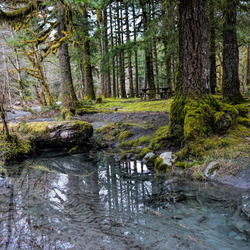The aquarium on the fourth floor of the Galbraith Building is a pleasant reminder to Prof. Susan Andrews of her many trips to the Caribbean through the years, but it also makes her lament the deteriorating condition of our world’s lakes, rivers, and oceans—these majestic bodies of water she’s dedicated her life to researching as sources of the water we drink.

“It’s concerning to me to go back to places that we used to visit and find that some of these environments are no longer as healthy as they used to be.”
While the focus of Prof. Andrews’ research has generally been to find ways of minimizing the formation of chemical byproducts during the treatment of water for large municipalities, more recently, Prof. Andrews has also been studying how natural minerals and sunlight can be used to treat our water supply.
“We focus on minerals containing iron or titanium dioxide. TiO2 is one of those substances that’s been used a lot recently in the photocatalytic treatment process because it’s very effective at destroying contaminants when activated by UV light or the UV component of sunlight”.
“When I first started working in TiO2 Photooxidation, I came to realize that TiO2 is in the natural environment in larger quantities than I would have ever even thought. And so, just together with the idea that it is photoactive, made me kind of think maybe we can make use of that.”

Andrews also points to some anecdotal evidence from a colleague in Africa, who noticed that water stored in certain types of pottery seemed to stay cleaner for longer, meaning that perhaps pottery containing TiO2 or other active minerals could have the same purifying properties.
The research is in its infancy, with grad students recording findings they observe using glass or pottery containers and small UV or solar lamps. This technology would never be used on a large scale, says Andrews, but could be very useful in remote settings such as small facilities with limited road access, such as an isolated campground.
BACK TO WORLD WATER DAY STORIES
By David Goldberg